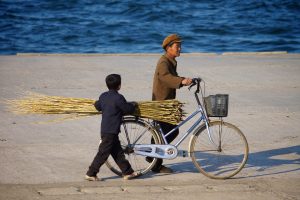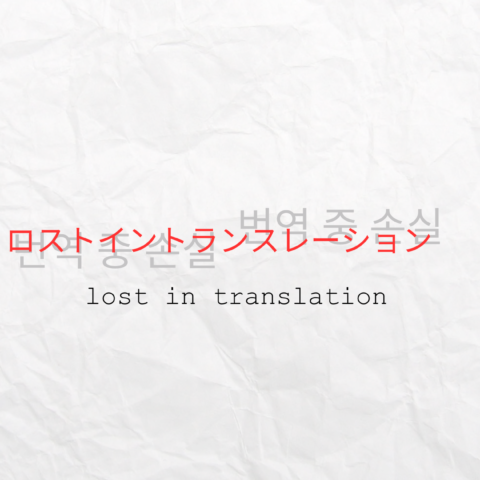
By: Katie Crow
On March 28, President Park, the president of South Korea, went to Dresden, Germany, where she received an honorary doctorate degree in law. During her acceptance speech, she delivered a three-point plan to North Korea. The plan was designed to encourage co-prosperity, cooperation, and even eventual hopes of potential reunification as South Koreans and North Koreans “recover a sense of common identity.” The 3-point proposal that President Park made was as follows:
1. An Agenda for Humanitarianism
- More regular family reunions for families separated during the Korean War
- A “1,000-day package project” created by South Koreans to assist North Korean mothers and their infants during their first 1,000 days
2. An Agenda for Prosperity
- A call for more collaborative projects, like the Kaesong Industrial Complex
- South Korean investment in North Korean infrastructure
- Joint-development of Korean natural resources
3. An Agenda for Integration
- Establishing an “inter-Korean exchange and cooperation office”
- People-to-people exchanges between Seoul and Pyongyang, especially in the fields of research, culture, arts, and sports.
Many applauded this proposal, viewing it as a breath of fresh air. Some were hopeful that the extension of this olive branch would finally start to mend relations between the two Koreas, and that North Korea, with its starving population and struggling economy, would not be able to resist such a generous offer.
However, North Korea was less than pleased in regards to the announcement.
Cries of outrage rose up immediately from Pyongyang. North Koreans lambasted President Park’s proposal, calling it naive and hollow-sounding. One such spokesperson from the Northern capital called the South Korean president a “faithful servant and stooge of the United States” who “blabbered” like a “peasant woman.”
Why was this proposal received so harshly by North Korea? There are three main reasons that stick out in particular. First, North Koreans felt that the language of the third point in particular was not satisfactory. It implied less of a cross-cultural exchange between the Koreas, and presented rhetoric more along the lines of “North Koreans should become like South Koreans.” Second, the fact that President Park had chosen to deliver the speech in Dresden raised a lot of alarms for North Koreans. As Dresden is located in Eastern Germany, which collapsed and was incorporated into Western Germany after the Berlin Wall fell, the symbolism was not lost on Pyongyang. President Park herself did not bother to make her intentions subtle, even calling upon German government officials to collaborate in the future so that the two Koreas could follow the “German model.” However, the last reason for North Koreans’ bitterness is the most prominent.
Before enacting the plan, President Park announced, North Korea would have to give up its nuclear weapons and begin denuclearization.
In other words, this has once again become a case of well-intended, but misguided policy.
Starting from 1998 until Lee Myung-bak’s election to presidency in 2007, South Korea had implemented a “sunshine policy” in regards to North Korea. The policy became a conciliatory approach that involved investing in North Korea’s economy. While it did help facilitate reunions of family members separated by the Korean War, it did not give enough incentives for North Korea to abandon their nuclear weapons program. Then, once elected, Lee Myung-bak dropped the humanitarian aid and tried to take a sterner stance on North Korea. This also was met with no significant results. Now it seems that the pendulum is swinging all the way back to the opposite end with President Park’s speech in Dresden, but South Korea’s new policy still has not tackled the main cause of North Korea’s proliferation.
In the theoretical school of International relations, one of the largest driving forces surrounding the decision to adopt nuclear weapons is the presence of a real or perceived security threat. When it comes to North Korea’s motivations to proliferate, the same is also true. As a small, weak state surrounded by seemingly hostile states, North Korea felt that the only way to truly secure its regime was to obtain nuclear weapons technology, and it succeeded. President Park offered them much needed aid and infrastructure, and North Koreans turned it down in order to keep their missiles. Why?
Because Pyongyang sees the fighting in the disputed maritime border of the Yellow Sea.
Because Pyongyang watches the continuation of the U.S.-South Korean military maneuvers.
Because, in all technicality, the Korean War never ended. South Korea and North Korea only ever agreed to an armistice, not a peace treaty. So in the face of these ongoing situations, why should North Korea even consider giving up its nuclear weapons when its government still believes the country to be in a state of emergency?
Penalizing North Korea for its tantrums and bad behaviors hasn’t worked in the past, and neither has the well-intended “sunshine policy” of incentives. In a way, President Park should be commended for trying to build a bridge between the Koreas and incentivize good behavior from the North to accomplish denuclearization. North Korea needs the humanitarian aid and infrastructure. There is no doubt about that.
However, a game of sticks and carrots will not ultimately convince North Korea to abandon its nuclear weapons program. If the Korean peninsula is to ever achieve denuclearization, policymakers must attack the problem at its roots by establishing actual peace and removing the security threat from over North Korea’s head.

